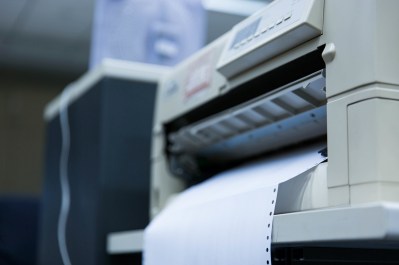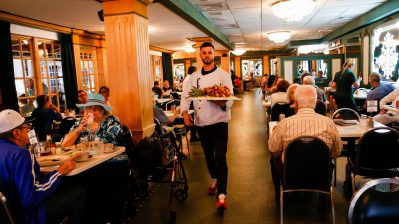
Substack CEO Chris Best does not want to tell you what to read
Substack CEO Chris Best does not want to tell you what to read

Earlier this month, the newsletter startup Substack, which enables writers to launch their own paid newsletters, announced that it had reached 1 million paid subscribers.
Substack, which has lured high-profile journalists and writers to its platform, now faces competition from Facebook, Twitter and traditional media companies making their own forays into premium newsletters.
“Marketplace” host Kai Ryssdal spoke with Chris Best, Substack’s co-founder and CEO, about his company’s role in content curation, the evolving media business and the contents of his email inbox. The following is an edited transcript of their conversation.
Kai Ryssdal: I’ve got, like, an embarrassing number of not just newsletters, but unopened and unread newsletters in my inbox, and I need you to help me understand why we need more in this world.
Chris Best: Don’t be embarrassed, that’s a totally normal state of affairs. The problem that people have today is not, “I don’t have enough things to read,” it’s that “I have limited time to spend on all the things that I care about. How can I allocate my attention better?” Having a direct relationship with writers who you trust is a way to do that. It’s asking someone to curate some of your time.
Ryssdal: What is your company’s job in curating those writers though, right? Because there have been some criticisms of Substack about, you know, letting whoever wants to say whatever they want to — and I don’t want to get into the whole slippery slope of First Amendment moderation and the problems that Facebook and Twitter are having — but what is your job in that trust framework?
Best: So we see our job and the fundamental benefit of our platform as putting writers and readers in charge. So, whereas, you know, if you go to your Twitter feed or your Facebook feed or your various sort of attention-monster social apps, they’re trying to, like, decide for you what to see. Whereas the whole idea of Substack is returning power to writers and readers. We take a very strong stance kind of in favor of freedom of the press and letting writers and readers decide for themselves how to set up those relationships.
Ryssdal: Those writers, though, have to — and, look, the big-name writers on Substack, you find that they’re doing really well, dollarwise — but they also have to be their own marketing department and their own finance team, and they have to work on other things besides, oh, I don’t know, writing, you know?
Best: Yeah, our goal with Substack is — as a writer, we can tell you we’ll do everything for you, except the hard part. We kind of want to make a platform that makes the rest of that stuff as easy as possible and kind of vanish into the background, which doesn’t mean that you don’t have to do marketing or any of these things, but we kind of want to make that on autopilot as much as possible.
Ryssdal: About that “vanish into the background” thing: Substack, the company, you know, pops up in the news every now and then, and I wonder how you feel about your company being part of the story — setting aside the free publicity thing — but your company being part of the story, as opposed to the writers and what they’re doing.
Best: You know, we always try to put the writers at the center of the story, because we think the writers are the hero of the story. At the same time, you know, if there’s, to the extent that there’s blame, we’re willing to take some of the blame sometimes, right? We made Substack knowing that we were running toward the fire on a bunch of problems, and so we accept if people have opinions about Substack.
Ryssdal: You’re not a media guy, right? You’re a tech guy. How did this happen, that you’re running what is fundamentally a media company now?
Best: I’m not sure I would categorize Substack as a media company. I think we’re —
Ryssdal: Really? Say more about that.
Best: I’d say we’re almost the thing that’s enabling a million media companies to bloom. The benefit of Substack is every writer has essentially their own media company. They’re their own independent thing. They own their audience, they own their work. The way that I got here is I’ve always believed that what you read matters. It shapes how you think, it shapes how you see the world, it shapes who you are, and so great writing is inherently valuable. And I’ve always been kind of a tech and product nerd, but I was trying to write an essay about this thing. I was like, “Writing is valuable, I should write.” And I sent it to my friend Hamish [McKenzie], who is a writer himself, and it was in my conversation with him that the idea for Substack and kind of the ethos of it was born. I think you need the fusion of both of those things to make something like Substack.
Ryssdal: Writing, as I’m sure you’ve discovered, is hard. But look, on that “great writing is valuable” thing: What is your company’s role in ensuring that the writing on Substack is valuable? You know what I mean?
Best: The way that we think of this is that our job for readers is not to go to them and say, “Hey, here’s the kind of stuff you should be reading,” right? Our job is not to go to you and say, “Hey, you need to eat your vegetables.” We’re going to give you the tools to make this decision for yourself in the best way possible, and if people choose to read things that aren’t the things that we would choose for them to read, I’m actually OK with that. I think that’s good.
Ryssdal: All right, so I started with my inbox confession. How many email newsletters do you have sitting in your inbox?
Best: I’m an inbox-zero type, so I clear them out. I can’t read ’em all.
Ryssdal: Oh, well, look, we can all just delete, man, come on.
Best: [Laughter] Well, don’t just leave it there! Don’t tell yourself you’re gonna go back to it, because you’re not.
Ryssdal: That’s right, you are absolutely not.
There’s a lot happening in the world. Through it all, Marketplace is here for you.
You rely on Marketplace to break down the world’s events and tell you how it affects you in a fact-based, approachable way. We rely on your financial support to keep making that possible.
Your donation today powers the independent journalism that you rely on. For just $5/month, you can help sustain Marketplace so we can keep reporting on the things that matter to you.


















